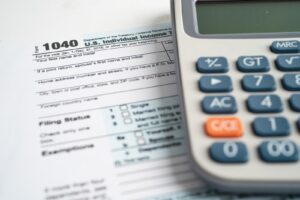Two popular questions here at AskTheMoneyCoach.com are: “Why are my credit reports or credit scores different?” and “Why isn’t my credit score contained in my credit report?”
This post will answer those questions.
What is a Credit Report?
A consumer credit report is a detailed file about you that has information on where you live, what debts you owe, how consistently you pay your bills, whether you’ve been sued or arrested, and if you have filed for bankruptcy. Your credit report is important because it may be examined – by anyone from employers to insurance companies – any time you apply for a job, seek credit or insurance, or even try to rent a home or apartment.
Your credit report is maintained by three different nationwide consumer reporting companies: Equifax, Experian and TransUnion. These consumer reporting agencies are commonly called “credit bureaus.”
Credit bureaus are separate companies, independent of each other, and each tracks and records your credit history. Credit bureaus also sell information in your credit files to banks, creditors, insurers, employers and other businesses.
How Credit Report Information Gets Created and Tracked
As mentioned, each of the three nationwide credit bureaus maintain a credit report on you. So, when you apply for and receive a new credit card, a record is created of the relationship between you and the bank that issued the credit card.
Let’s use a fictious bank called Anybank USA. Suppose that Anybank offers you a Mastercard, you apply for the card, and get approved.
Here is what will happen next:
- Anybank will tell each of the three credit bureaus that you have a new credit credit card account. (This notification to the bureaus usually happens in about 30 to 60 days after your account is opened).
- Anybank will tell the bureaus what your spending limit, or credit limit, is.
- Anybank will tell the bureaus who else is either a co-signer or an authorized to user on your Mastercard.
- Each month, Anybank will report your spending activity to the credit bureaus, indicating what your current balance is (i.e. how much you’ve spent or charged), and whether or not you’ve stayed within your pre-set credit limit or exceeded it.
- Each month, Anybank will also report your payment history to the credit bureaus, indicating such details as the amount of your payment and whether or not you’ve paid your bills on time, as per your agreement with Anybank.
Each of the three credit bureaus will update your credit report based on the information they receive from Anybank, and these updates don’t necessarily happen at the same time. Remember: each bureau functions on its own, so the policies, procedures and speed with which information is handled are not identical at all three credit bureaus.
Additionally, each credit bureau may have different information about you — say, for example, your credit card balances may vary in the credit reports of the three bureaus. Again, that’s because the credit bureaus don’t all update their information at the same time/date.
In cases where a credit bureau has completely wrong information about you, you can dispute that information. By law, a credit bureau has 30 days to investigate your dispute. Within that time, they must either verify the information or delete any information that is inaccurate, outdated or unverifiable.
The three credit bureaus keep track of the credit cards you own and their balances, and any loans you took out including mortgages, student loans, auto loans, and more. They monitor your payment history on all of your accounts and will also monitor any judgements, charge-offs, tax liens, bankruptcies, etc.
In a different article I discuss how long these negative items will stay on your credit report. But for the purpose of this article, we will turn our focus now to the difference between a credit report and a credit score.
What is a Credit Score?
A credit score is simply a three-digit number that summarizes your overall credit standing and tells creditors how likely you are to either repay a debt or default on it. A credit score is calculated based on the underlying information that is contained in your credit reports. But a credit score is not automatically included in credit reports. You generally have to pay for a credit score, whereas you’re legally entitled to get your credit reports free of charge every year.
There are a few different consumer credit scores that you as a consumer should mainly be concerned about. They are:
- The FICO credit score
- The Experian Plus score
- The VantageScore
Your FICO Score
Your FICO credit score is issued by the Fair Isaac Corporation. It is a separate entity and business that is not owned by any of the three credit bureaus.
Your FICO score can range between a low score of 300 points to a top score of 850 points.
FICO scores are the most popularly-used credit scores. Anyone that is considering loaning you money, leasing you equipment, or even considering extending you a job offer or renting an apartment to you will probably want to know your credit rating or what your FICO score is.
A low score of, let’s say 550, means that you probably will be denied the credit you want. A high score of perhaps 780 will greatly improve your chances of getting the credit you want. It’s that simple.
Here are details on what factors Fair Isaac uses to determine your FICO credit score.
Fair Isaac, through their myFICO.com website, also offers consumers a wide range of credit monitoring services which allow you to monitor your credit score for a fee. Personally, I’ve found credit monitoring to be invaluable in helping me to achieve Perfect Credit.
The Experian Plus Score
The Experian Plus is different from your FICO score. The Experian Plus Score, as the name suggests, is issued by the Experian credit bureau. Your Experian Plus score can range between 330 and 830 points.
If you pay all of your bills on time, don’t have any liens or judgements on any of your credit reports and if you have relatively low to zero balances on your credit cards, you will likely have a high Experian Plus score. The reverse is true as well: if you have multiple late payments on your record, a lien, a bankruptcy, etc., chances are your credit score will be low.
The VantageScore
The VantageScore was introduced in 2006 and formed jointly by TransUnion, Equifax and Experian.
Even though the VantageScore was created by a mutual collaboration of the three national credit bureaus, VantageScore is owned by VantageScore Solutions, LLC which acts as a holding company to the intellectual property rights of VantageScore.
Without getting bogged down in all of the legal ownership, rights, etc…here is what you need to know about the VantageScore:
- The VantageScore ranges from 501 to 990 points
- VantageScore uses a familiar letter grade associated with five different ranges within the score.
- “A” for scores between 900-990
- “B” for scores between 800-899
- “C” for scores between 700-799
- “D” for scores between 600-699
- “F” for scores 599 and below.
So how do you get everything? If you want your credit reports and credit scores, here is the short answer:
You have to get your credit reports and credit scores separately, and it’s fastest to do it online. Credit reports are available at no charge; credit scores you have to pay for, typically about $10 to $15 or so.
You can get each of your three credit reports from the credit bureaus for free – with no strings attached – by going to AnnualCreditReport.com.
You can get your FICO score from myFICO.com.
You can get your Experian Plus score from Experian.com.
You can get your VantageScore from VantageScore.Experian.com.








